When dawn mist veils Mount Shaoshi, the monastery bell startles crows from ancient pines. Few pilgrims know this sanctuary of Zen and Kung Fu began with an Indian weaver’s fateful encounter with an emperor.
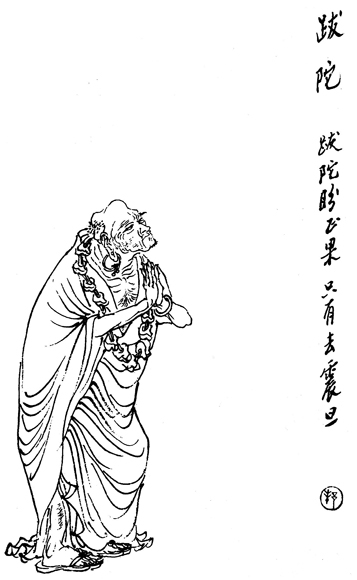
Chapter 1: The Weaver’s Sutra — Buddhabhadra’s Journey
Luoyang, 495 AD. Emperor Xiaowen studied the dust-stained monk before him—his robe frayed by desert winds, yet the Dasabhumika Sutra in his hands pristine.
“Where do you come from, Venerable One?”“Buddhabhadra. I crossed thirty-six kingdoms seeking Buddha’s light.”
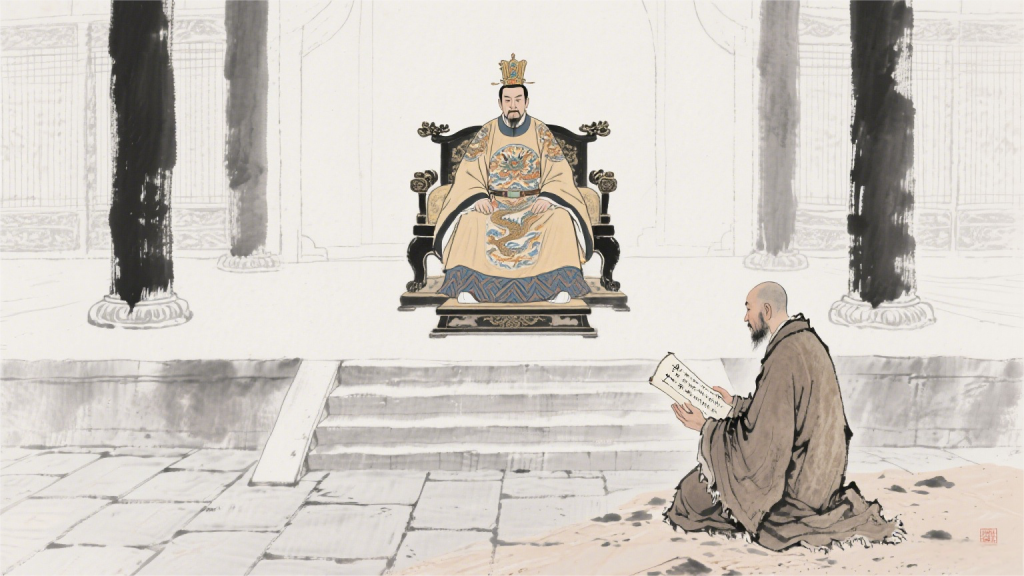
Destiny’s thread spun decades earlier:
In East India, six-year-old Buddhabhadra’s fingers bled from weaving after his father’s death. Neither his mother nor his twenty years of failed meditation could foresee how a fellow monk’s prophecy would birth Shaolin:
“Your heart-lamp belongs to Zhen Dan (China).”
After braving Pamir blizzards to Pingcheng, the emperor carved him a cave in Yungang Grottoes. But Buddhabhadra’s gaze drifted south—to Mount Shaoshi, “where forests breathe silence.”
So the decree came: “Clear the pines on Shaoshi’s slope. Build him a sanctuary.” As beams rose in the valley, villagers heard chants ripple through mist. They named it Shaolin—”The Wisdom Grove of Shaoshi.”
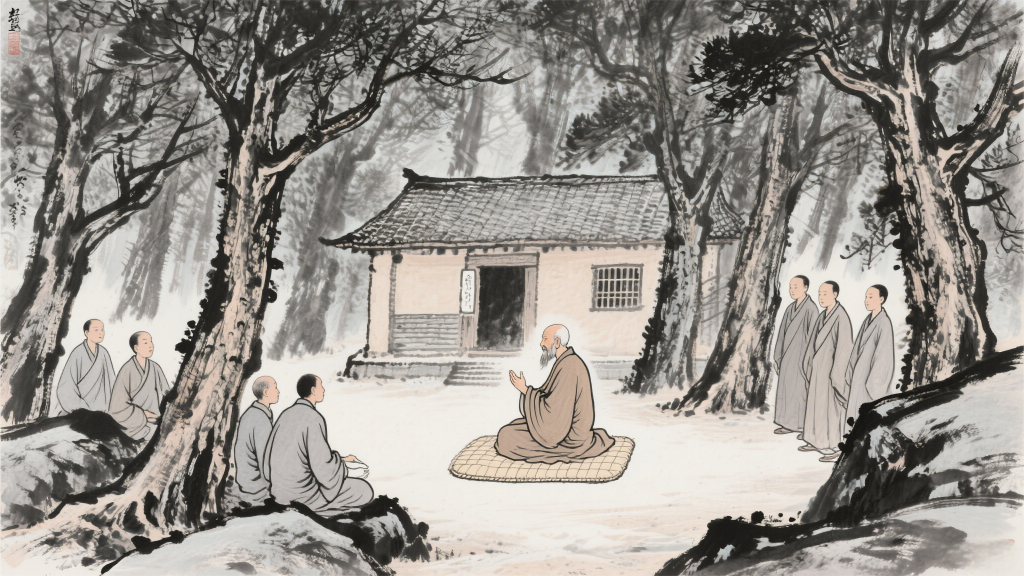
Chapter 2: The Shadow on Stone — Bodhidharma’s Revolution
Thirty monsoons had stained Shaolin’s ginkgos gold when a barefoot monk waded ashore at Guangzhou. An empty bowl hung at his waist, but fire lit his eyes—Bodhidharma, Zen’s First Patriarch, had come.
Emperor Wu in Jinling misunderstood him: “I built four hundred temples. What merit have I earned?” Bodhidharma swept a hand through river fog: “No true merit.”
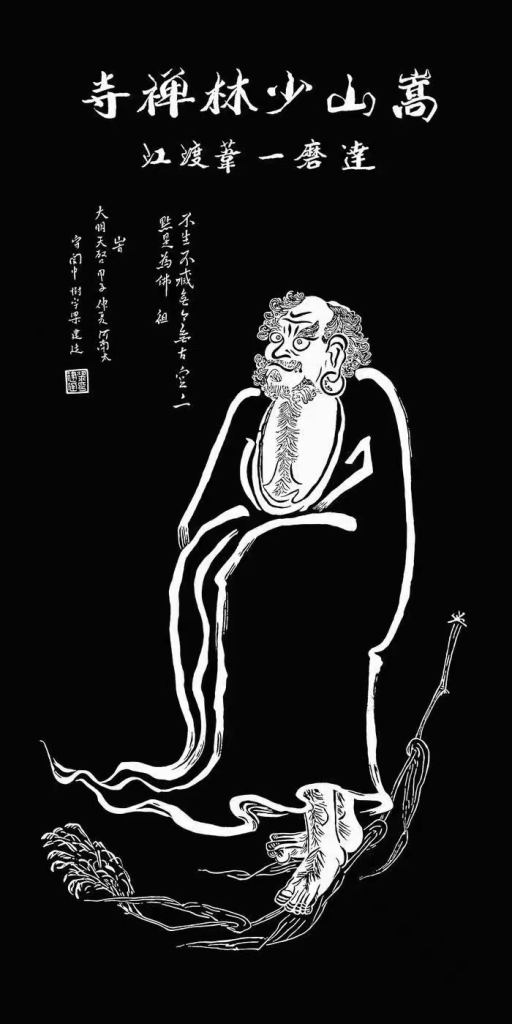
His solitary trek ended in a Shaoshi cave. One stormy night, he crouched inside—and stayed nine years.
Secrets of the wall-gazing:
- When vipers guarded the cave, his compassion gentled their coils
- Villagers spied a human shadow deepening on the stone—his Zen mind etching rock
- There he realized Biguan: “Let the mind be a cliff—shattering delusion, revealing pure nature”
As disciple Huike knelt in snow begging wisdom, Bodhidharma pressed the Lankavatara Sutra to his chest: “Here lies my marrow.” Pines stilled across Shaoshi—Zen’s first heartbeat echoed from stone to world.
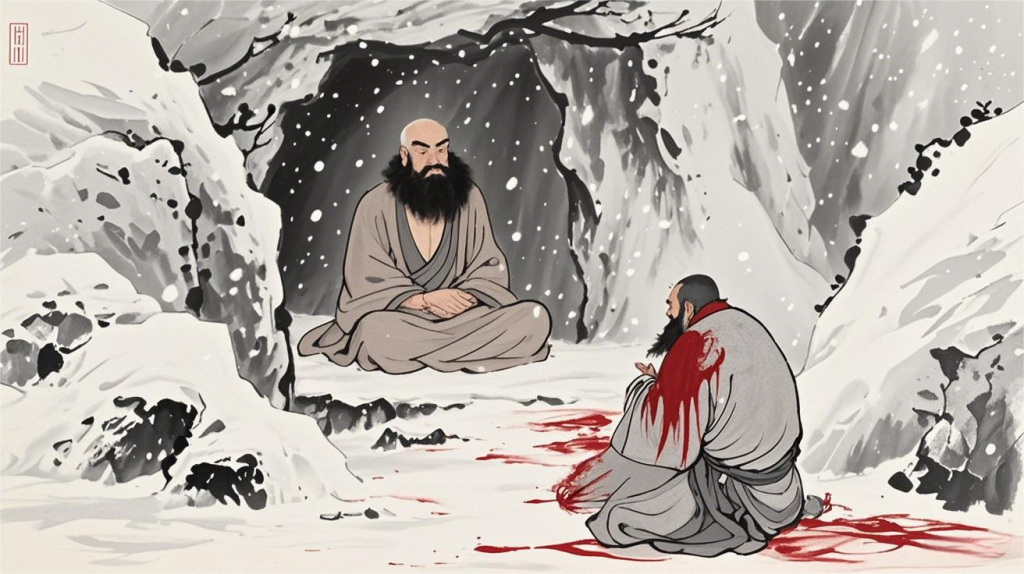
Chapter 3: Legacy in Stone — Translation Desk & Blood-Stained Snow
Buddhabhadra built his translation desk in Shaolin’s northwest corner. When ginkgo leaves dusted his parchment, Sanskrit transformed into Chinese rivers of ink. He touched novice Huiguang’s head: “Buddha’s radiance starts with you.”
Meanwhile, Bodhidharma’s shadow had sunk three inches into cave rock. One day he emerged, smiling at baffled monks:
“No scriptures. Point straight to the heart—Zen lives in carrying water, chopping wood.”
This breeze would sweep through Tang China:
- Huiguang, nurtured at Buddhabhadra’s desk, became founder of Vinaya School
- Bodhidharma’s “Two Entrances & Four Practices” (awakening through insight and action) birthed Zen’s golden age
- Today, pilgrims still touch the blood-stained step where Huike severed his arm for wisdom
🌄 Pilgrim’s Guide: Walk with the Patriarchs
When you visit:
- Translation Terrace Ruins:
- Touch the ancient ginkgo roots where Bodhi leaves once scattered
- Bodhidharma Cave (34.508°N, 112.942°E):
- Sit ten minutes—feel nine years crystallized in stone
- Though the shadow-rock was moved (now in Fuling Temple), Zen essence seeps through granite
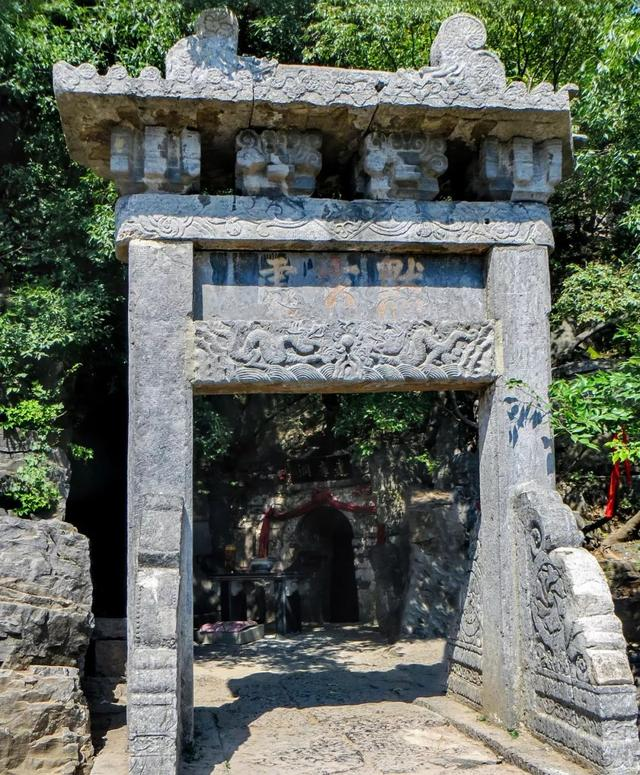
- Standing-in-Snow Pavilion:
- Scatter fresh snow on the ledge—where devotion burned hotter than blood
Old monks whisper: Misty days unveil the patriarchs—Buddhabhadra polishing bells, Bodhidharma watching kung fu in the Thousand Buddha Hall.
The Miracle of Shaolin:
While Buddhabhadra brought scriptures, Bodhidharma burned them to light the soul. When translation chants met wall-gazing silence on Shaoshi, they ignited not just Buddhism’s legacy—but humanity’s eternal quest for awakening.
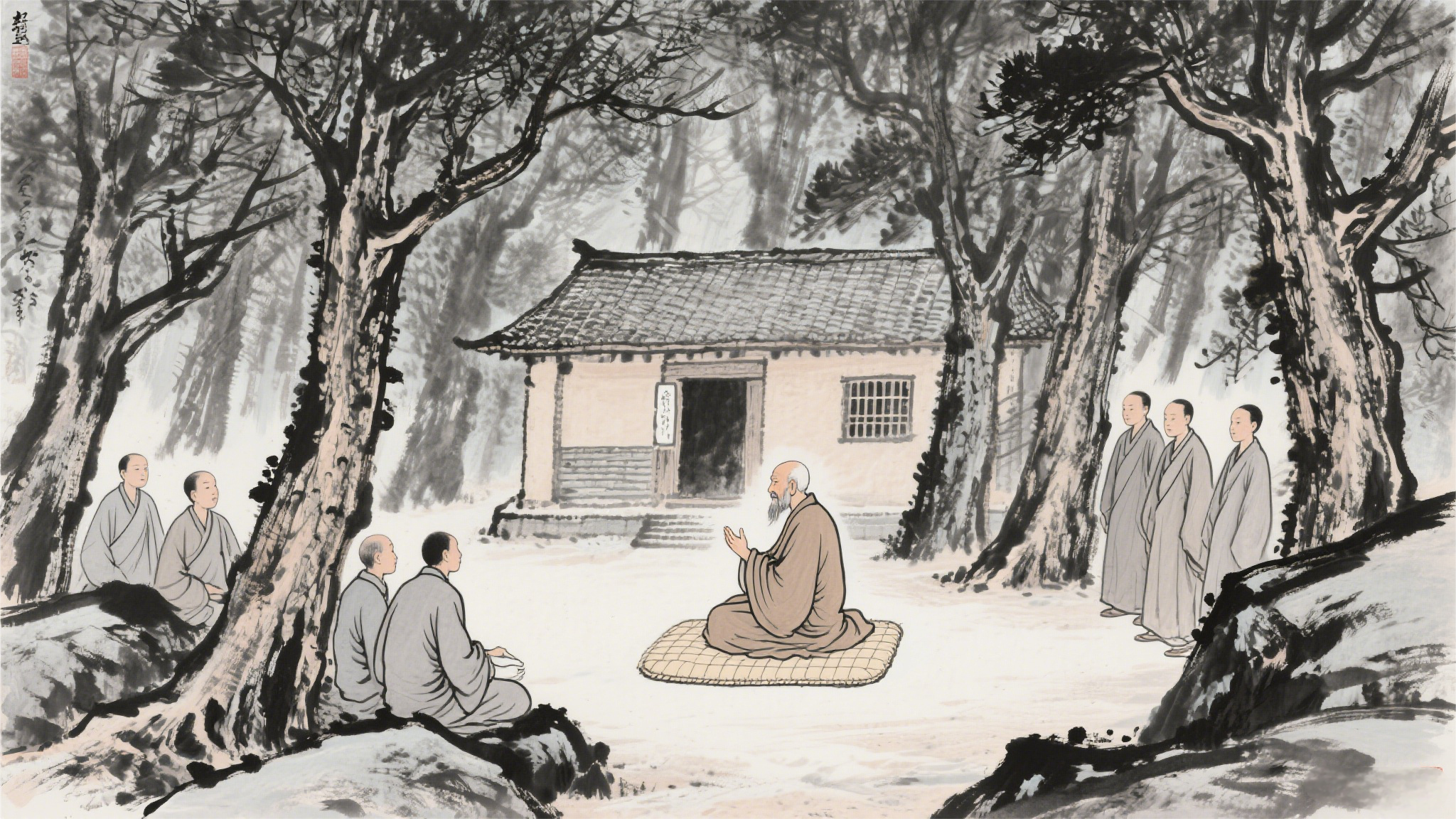
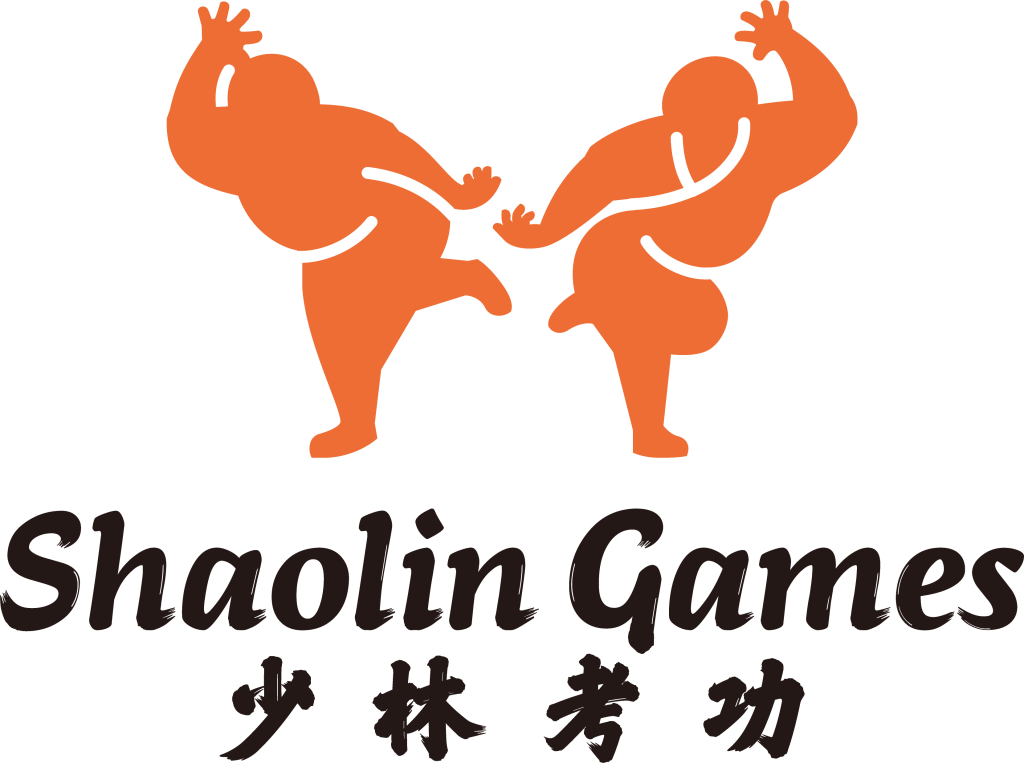
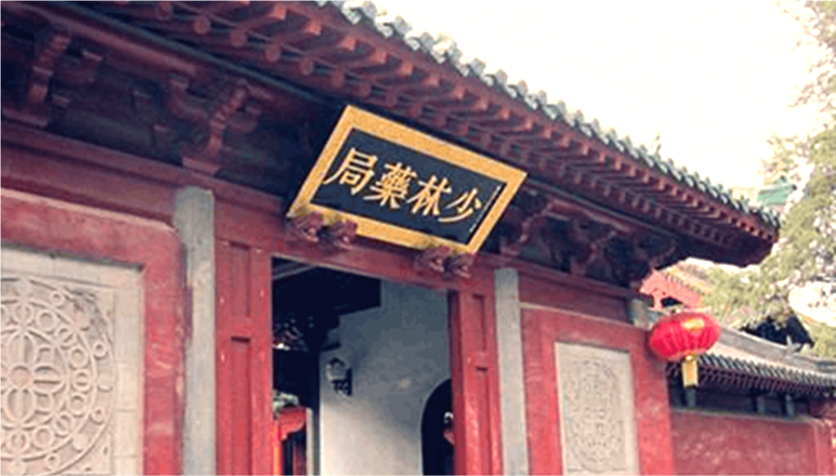
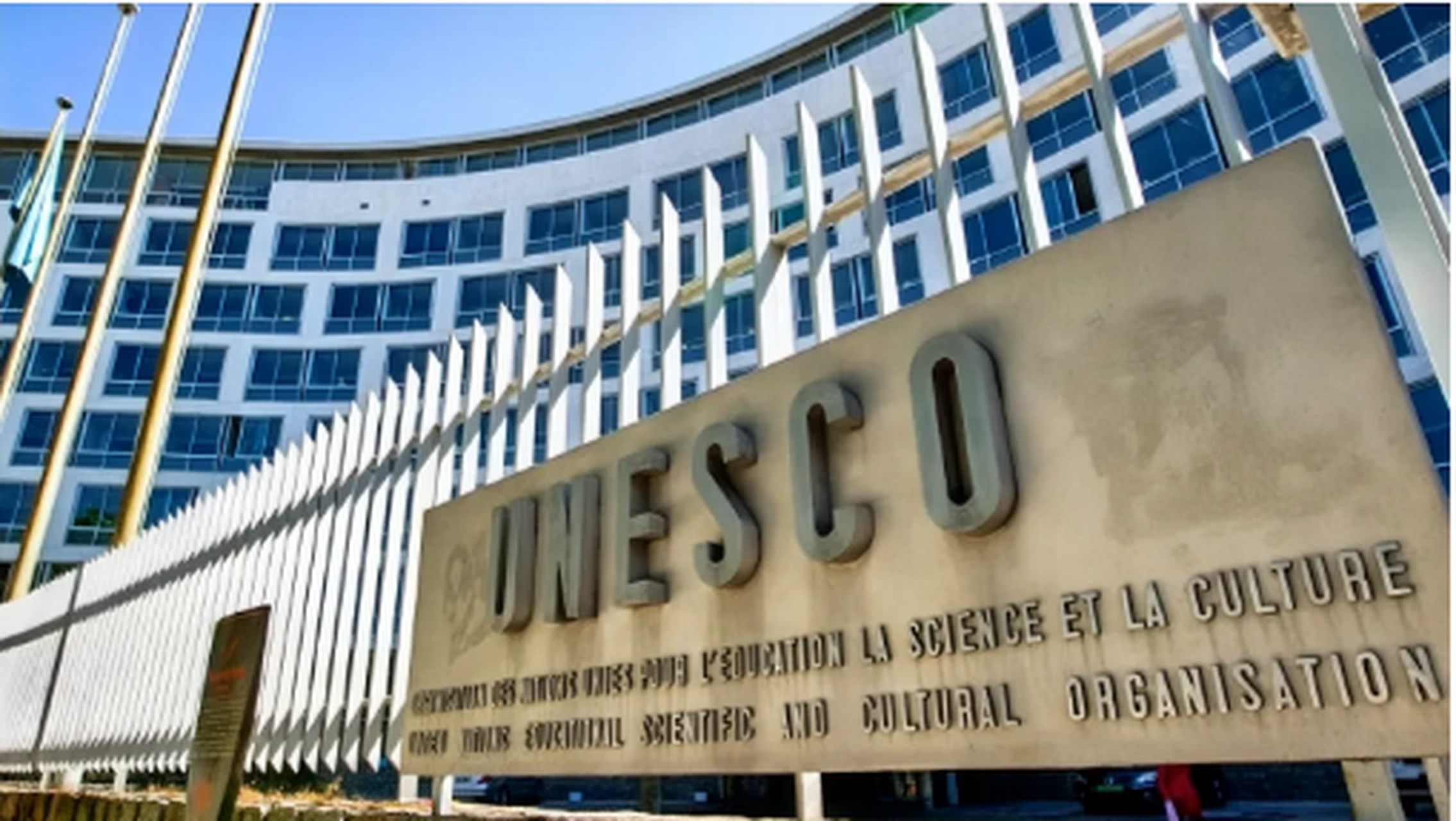
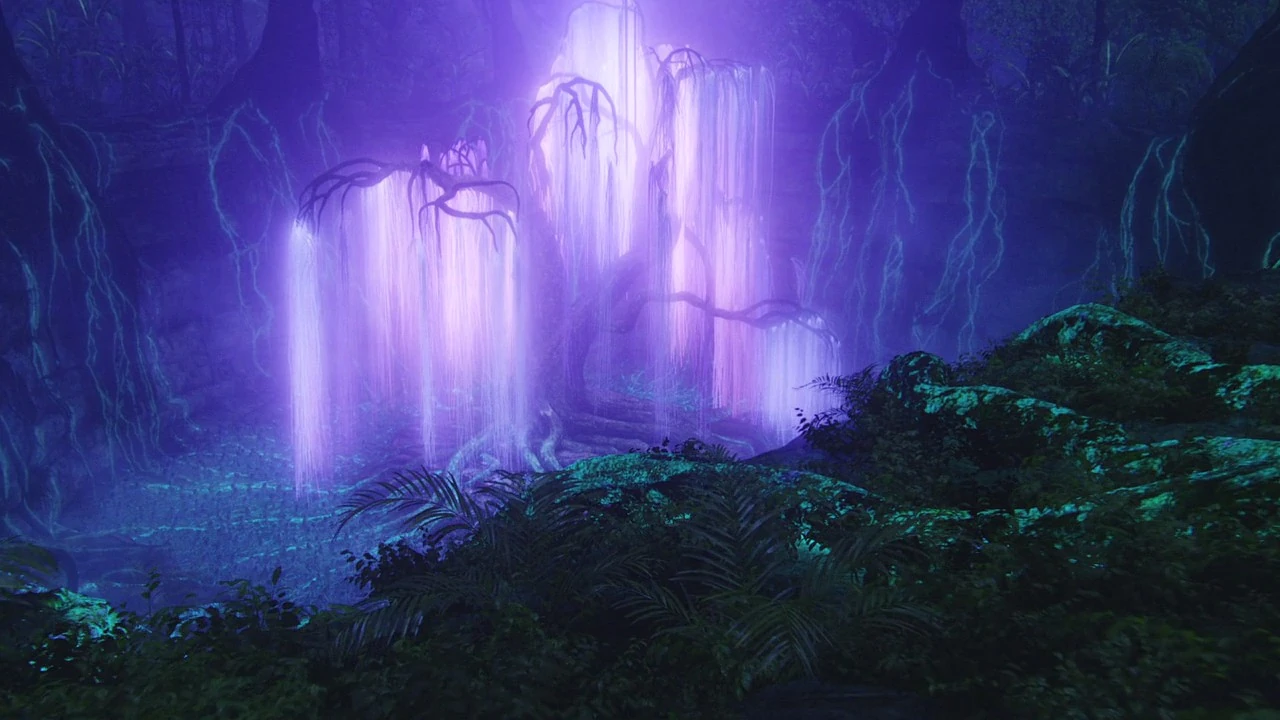

Leave a Reply